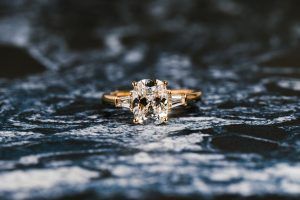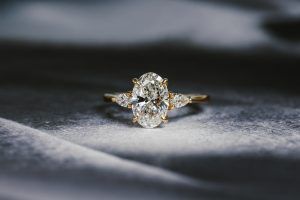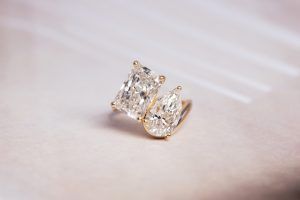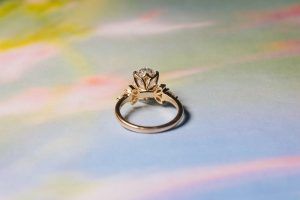
written by Jessica
Marquise Diamonds – Everything You Need to Know
To the one that wants the marquise, it is the only one for her.
The marquise diamond cut was developed in France, and named after Marquise de Pompadour, mistress to King Louis the 15th, as it resembled the outlines of her lip. Romantic, classical, fancy, and whimsical come to mind as we gush over this bespoke cut of a diamond!

We want to equip you with everything you need to know about the unique marquise cut, so let’s get right into it. We’ll go over the basics, some terminology that might help you define what you’re looking for, things to avoid, personal preferences including how to set the stone (this will affect the look and feel!) and two tests we recommend to know which one works best for you.
MARQUISE ANATOMY
First, let’s take a closer look and define the lip-shaped stone.
There’s three aspects: The belly, the point, the in-between transition a.k.a the wing.
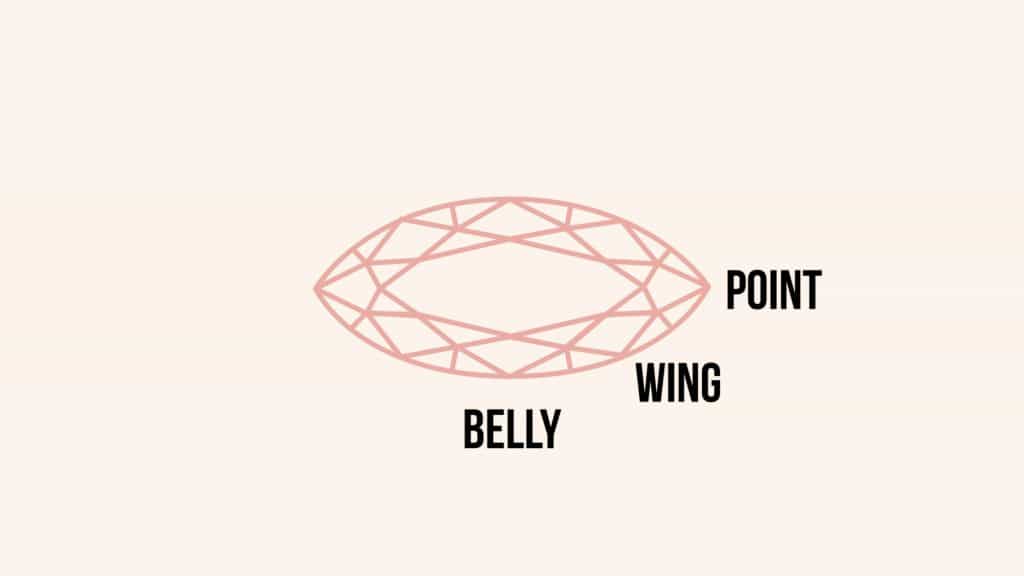
THINGS TO AVOID IN MARQUISE DIAMOND
1. Irregularities in the shape
The marquise might exhibit an uneven wing. This is just a sign that the stone has not been cut well.
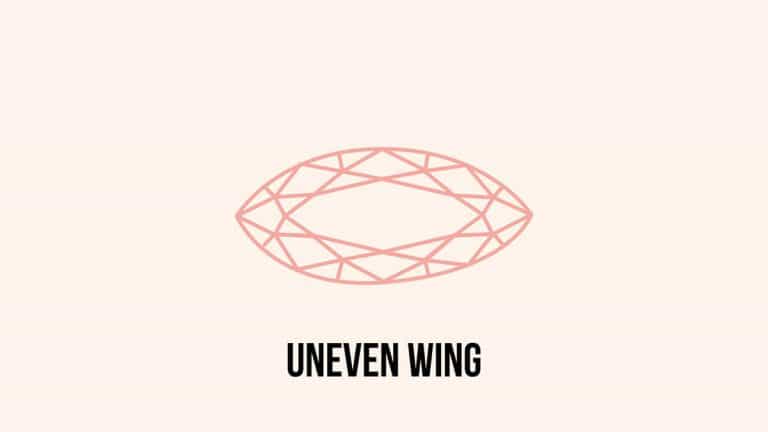
2. The dreaded “bow tie effect”
If you’ve followed us for a while, you’ll know that we have some “beef” with the bow tie… We’ll just say that on the spectrum of bow ties, a stone with a more minimized one will be more pleasing to the eye.
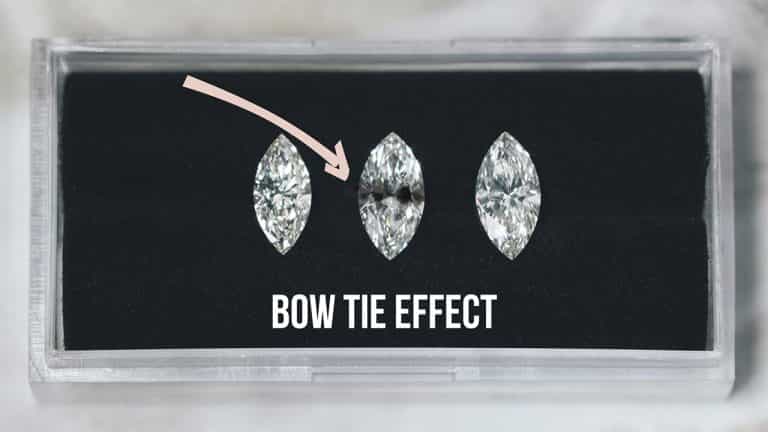
COLOR
The colour – This is more of a thing to keep in mind, marquise shapes have a tendency to show the natural colour of the stone more than others. (We have a blog that talks about diamond color if you want to learn more.) If you have a stone with a bit of a yellowish or brownish tinge, it will definitely be easier to spot with a marquise diamond. We usually recommend at least an H or higher, even to stay around G or higher for the color sensitive eye.

MARQUISE CUT PREFERENCES
Now let’s get to the fun stuff! Your preferences.
We got to know the overall lip shape of the stone, but just like our lips, the marquise can really be different for each person.
When considering the stone a lot of people can really be hung up about, “what’s the length to width ratio?” Fractions are great and all, but at the end of the day, let your eyes lead you. What is the visual impact on your hand? You may prefer a marquise that’s more hyper-elongated, naturally leading to more spacing at the east to west on your finger. Or perhaps you like the marquise that’s a bit more plump and shorter, this will read more focalized.
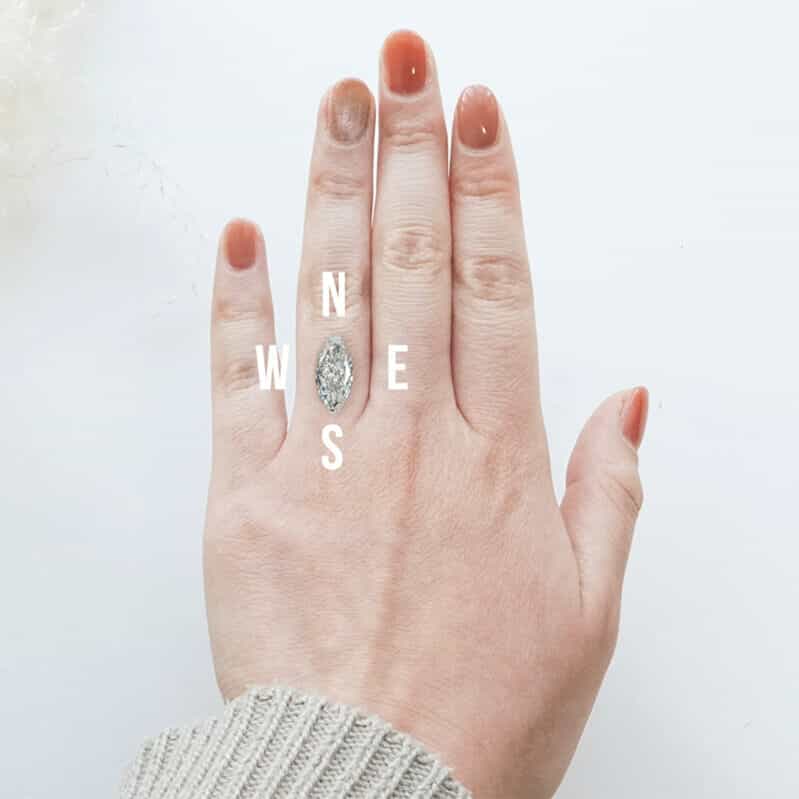
elongated
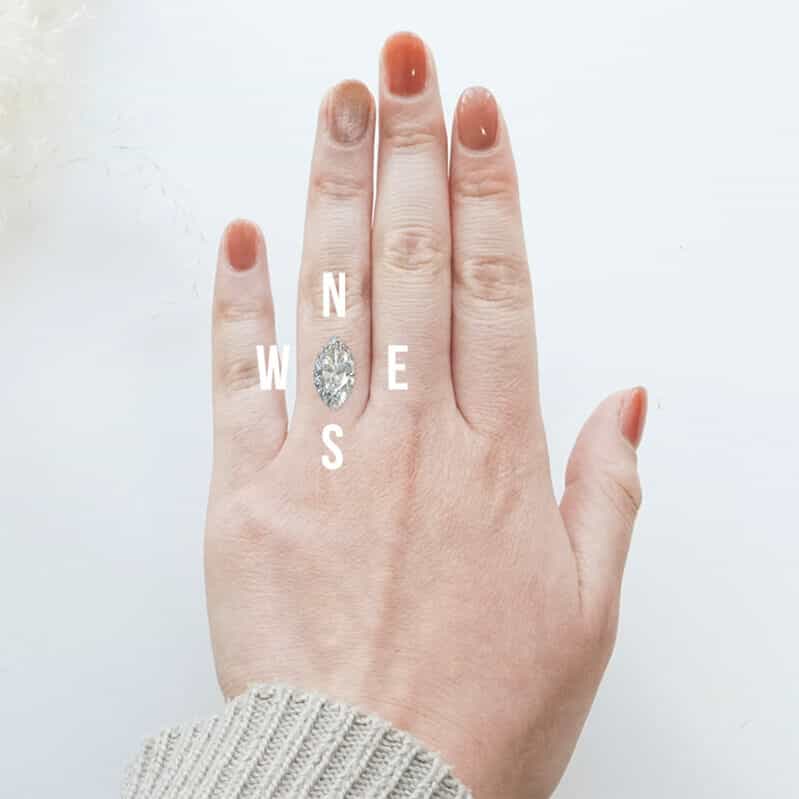
plumped
There’s even the outline of the stone itself. How does it read going from the belly to the point? There are even variations in the point! Some people like it where it just goes straight in, others like it more rounded off where it becomes this beautiful hybrid “moval” shape (marquise + oval).

Remember, this is a discovery process. It is all about figuring out what YOU like. This is not science, this is art. What’s visually appealing to you? What do you like on your hand?
Style & Claw Preference
Shape is one thing, but let’s also address style. Where the “claws” are, how the stone is set is going to make a big impact on the shape of the stone as well. For example, claws placed at the east and west points will make the stone appear more plump. Whereas to those who prefer an elongated look, we might suggest the claws to be placed closer to the north and south points.

claws placed at the west and east points

claws placed at the north and south points
It goes without saying, it is very important for the marquise to make sure you see multiple stones for comparison. So we have set up two practical tests to make sure you are confident in your choosing and fitting process.
PROPORTION FITTING TEST
This is the part where we come in, with the goal of enhancing the experience of fitting for you. When you are trying the different stones physically, you are able to see how it reads on your particular hand shape, and find what is aesthetically pleasing to you.
If you are out of town, no sweat. We can actually do this virtually with you! We are able to superimpose the proportions of the diamond on your hand, so that you can do this fitting test from wherever you are.

MULTI-LIGHTING TEST
This test is super useful especially for the marquise because of the way it shows off its colour. We will show the stone under natural window light, flat fluorescent lighting, and what would simulate direct sunlight.




